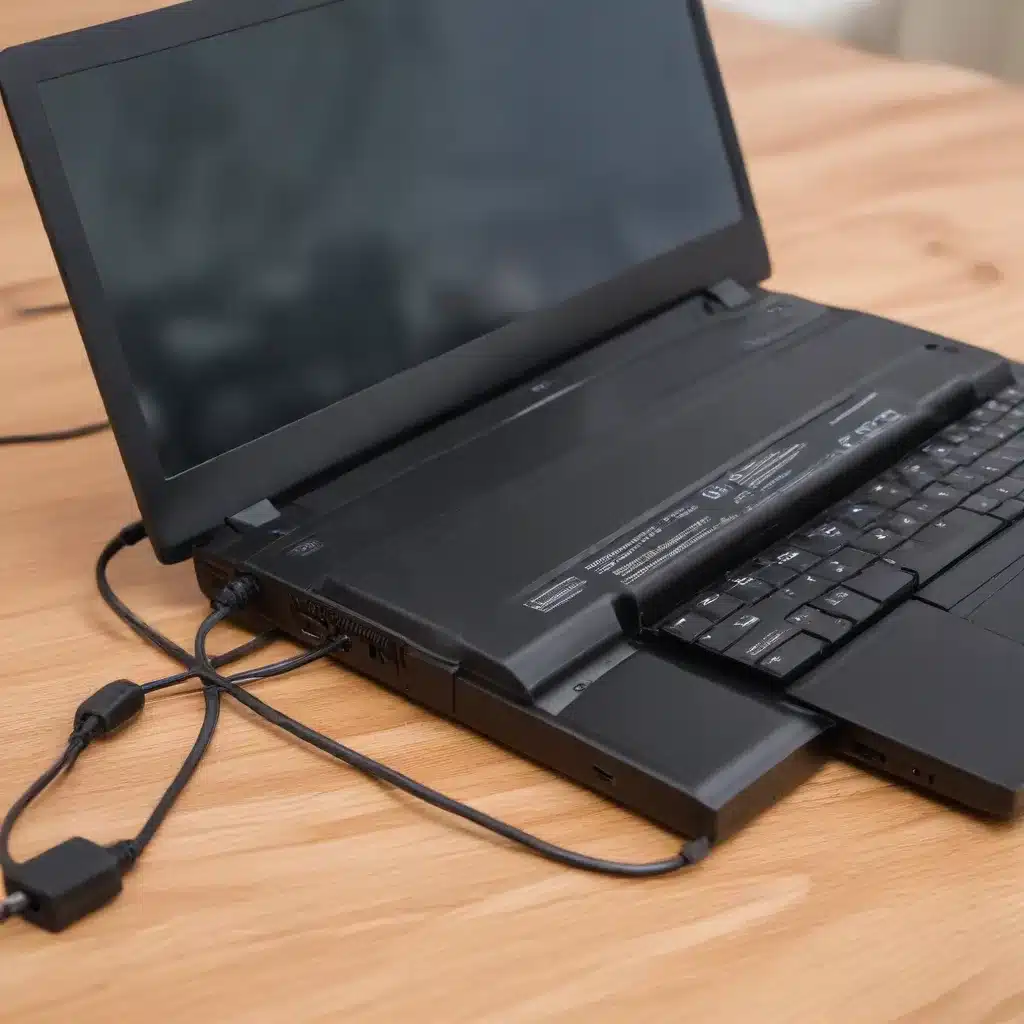
Understanding Lithium-Ion Battery Technology and Maximizing Laptop Runtime
As an experienced IT professional, I’ve encountered countless laptop owners struggling with battery-related woes. Whether it’s rapid battery drain, inconsistent charging, or confusing manufacturer recommendations, these issues can be both frustrating and mystifying. However, with a deeper understanding of lithium-ion (Li-ion) battery technology and some practical troubleshooting steps, you can extend the lifespan of your laptop’s power source and keep it running at its best.
The Importance of the First Charge
When you unbox a brand-new laptop, the manufacturer’s advice on the initial battery charge can vary widely. Some recommend a 24-hour charging session, while others suggest just 3-8 hours. So, what’s the real deal?
The truth is, the first charge of a Li-ion battery is crucial in setting the stage for its longevity. These batteries thrive on consistent, full-cycle charging and discharging. During that initial charge, the battery’s internal chemistry is forming and aligning itself for optimal performance. By allowing it to reach 100% capacity and then fully draining it, you’re helping to calibrate the battery’s gauge and ensure it provides accurate runtime estimates going forward.
Ultimately, the length of that first charge isn’t as critical as simply allowing the battery to reach a complete 100% state of charge before using it. Keeping the laptop plugged in for an extended period, such as 8-24 hours, can provide an extra layer of care, but isn’t strictly necessary. The key is to avoid cutting that initial charge short or repeatedly topping it up before it fully drains.
Adjusting Power Settings for Maximum Runtime
Once your laptop’s battery is properly conditioned, the next step is to optimize its performance through strategic power management. This is where the insights from the r/LenovoLegion subreddit come into play.
The Legion community has discovered a suite of settings that can dramatically boost battery life, even on high-performance gaming laptops. Here are the key adjustments to consider:
-
Refresh Rate Reduction: Lowering the display’s refresh rate from 120Hz or 144Hz down to 60Hz can make a significant difference in power consumption, without significantly impacting most productivity tasks.
-
Disabling Performance-Enhancing Features: Features like Overdrive and Network Boost, which are designed to squeeze out maximum performance, can also drain the battery more quickly. Turning these off when on battery power is a quick win.
-
Offloading the Discrete GPU: Many laptops, especially gaming models, have a dedicated Nvidia or AMD graphics chip in addition to the integrated Intel or AMD GPU. By setting the laptop to use the integrated graphics in the Nvidia Control Center or Radeon Settings, you can avoid the power-hungry discrete GPU when not needed.
-
Implementing a Custom Power Plan: Creating a custom Windows power plan with all battery-related settings tuned for maximum efficiency can provide significant runtime improvements. This includes capping the CPU at 20% when on battery to prioritize efficiency over raw performance.
-
Thermal Management: Selecting the “Quiet” mode in the laptop’s power/thermal management software, such as Lenovo Vantage, can help the system run cooler and consume less power when unplugged.
By implementing these proven tips, you can often double or even triple the battery life of your laptop, making it a true all-day companion.
Troubleshooting Charging and Battery Issues
Of course, even with optimal power settings, you may still encounter frustrating battery-related problems. The HP Support Forums offer valuable insights into common charging and battery health issues.
One of the most perplexing situations is when a laptop reports it’s “plugged in, not charging.” This can be caused by a variety of factors, from faulty hardware to software conflicts. The recommended troubleshooting steps include:
- Drain the Battery: Allow the laptop to run on battery until it completely shuts off, then let it sit for 30 minutes before reconnecting the charger.
- Reinstall the Battery Driver: In the Device Manager, uninstall the ACPI-Compliant Control Method Battery driver, then restart the laptop and let Windows reinstall it.
- Update Drivers and BIOS: Ensure your laptop’s drivers, especially for the battery and power management, are up to date. Also, check for any available BIOS updates that could address charging issues.
- Test the Charger: Try using a different, compatible charger to rule out a problem with the original power adapter.
If these troubleshooting steps don’t resolve the issue, it may be time to contact the laptop manufacturer’s support team, as the battery itself could be faulty and in need of replacement.
Maximizing Battery Lifespan: Dos and Don’ts
Regardless of the specific battery-related challenges you face, there are some general best practices to keep in mind for maintaining the long-term health of your laptop’s power source:
DO:
– Avoid letting the battery fully drain to 0% too often; aim to recharge it when it reaches 15-20%.
– Store the laptop in a cool, dry place when not in use to minimize degradation.
– Calibrate the battery periodically by letting it fully drain and then recharge to 100%.
DON’T:
– Leave the laptop plugged in and charging at 100% all the time; unplug it once it’s fully charged.
– Expose the laptop to extreme temperatures, as heat and cold can accelerate battery wear.
– Use third-party battery-optimizing software without thoroughly researching its effects.
By following these guidelines and the other tips outlined in this article, you can help ensure your laptop’s battery provides reliable, long-lasting performance, no matter how demanding your workload may be.
Remember, the IT Fix blog is always here to provide practical IT solutions and insightful advice to keep your technology running at its best. Stay charged and empowered!












